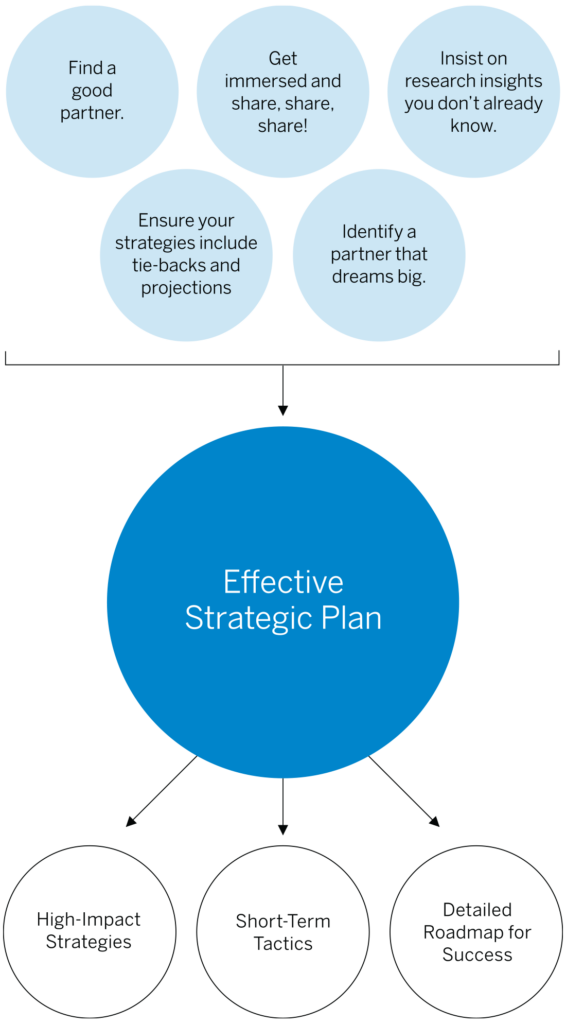Crafting the overarching strategy for your organization is no small task. Your mission and vision are significant, so translating them to a comprehensive short- and long-term strategy is challenging. There is fear of missed opportunities, of not implementing solutions for low-hanging revenue or impact up shots, and a general desire to ensure your strategy doesn’t exclude critical functions that drive business performance.
Strategic plans should be the backstop to quell these fears, but they often come up short. At their best, strategic plans can be detailed road maps for success that are as focused on high-impact strategies as they are on short-term tactics. Unfortunately, strategic plans usually end up being placed on shelves—50-page printed PowerPoint decks with research you already knew and ideas that have no implementation plan. They might provide directional guardrails, but usually don’t include strategies to maximize the performance metrics you care about most.

Find a good partner.
Getting outside analysis and perspective on your business is valuable. It takes trust and vulnerability, but walking through this process with a team that can shake off bias and look at your business objectively is critical. A partner experienced in the world of strategy will be able to see beyond obstacles and distractions to recommend bold strategies.
Get immersed and share, share, share!
Most strategic plans start off with some form of a discovery meeting where leadership shares pertinent information with a facilitator or a strategic planning partner. This is helpful, but only the start. Discovery meetings should cover a wide range of topics beyond your history and short-term goals. A good partner will ask hard questions, and at times, force alignment within a healthy leadership team.
Insist on research insights you don’t already know.
Too often, consultants regurgitate information you already had or already know. Identifying unknown insights or those that lead to innovative thinking are much more valuable. Find a research partner who contributes more than the first few pages of Google results.
Generate strategies that go big.
Within typical strategic plans, most “strategies” are simply areas the organization should focus on, or obvious ideas that needed executed. Effective strategic plans include bold strategies that are tethered to revenue or impact—ideas that move the needle and make way for market share capture, new customers, or expanded impact to one’s mission. When it comes to crafting strategies, dream big.
Include tie backs and projections.
The biggest missing piece to most strategic plans is the execution road map. Consultants are notorious for executing light research, presenting new strategies and ideas, and packaging it up in a PowerPoint. That approach is not enough. Effective strategic plans have detailed timing and priority projections, assignments for who should own and execute strategies, and confirmation that each strategy is affordable and financially responsible. Without this important step, business leaders are left to figure out implementation and execution of strategies over the short and long term.
By following these tips, your organization will experience the benefit of a roadmap that does more than sit on a shelf after one review. The deliverable will become a document you reference regularly and serve as the driving force in accomplishing the goals and growth you’ve worked so hard to achieve.




